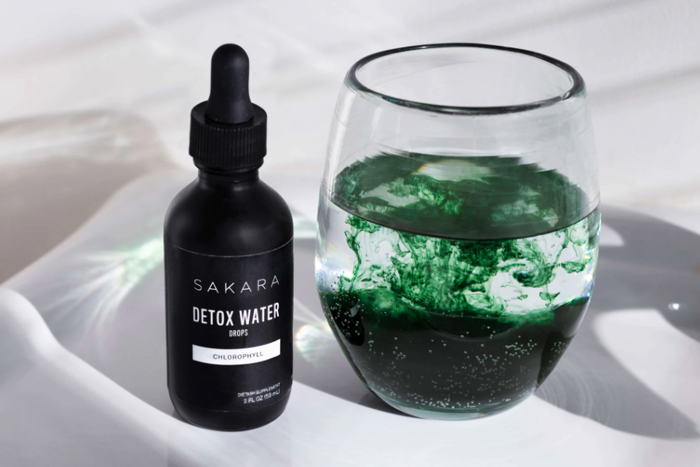 Feature Image by Sakara Life
Feature Image by Sakara Life
From dissecting the resurgence of the sweater vest to solving the riddle: is coffee actually bad for you? — we’re totally obsessed with learning a thing or two about the ins and outs of every trend.
That’s why it was a must for us to get down to the bottom of a recent health trend surrounding chlorophyll. However, there’s nothing about the actual component that is recent at all.
What is chlorophyll?
Chlorophyll is a term you might have learned about in science class. That’s because this component is so crucial to the process of photosynthesis, you know, the process that sustains plant life and grants oxygen to the entire planet (no biggie).
Chlorophyll is a green-pigmented component located in the plant’s chloroplast that allows the plant to absorb the energy it needs to build tissue. It does so by absorbing the light from the sun before splitting off into two energy-storing molecules to then be converted to carbon dioxide and glucose. When the glucose is combined with the nutrients in the soil, new leaves grow and more oxygen is produced. Fun fact: Chlorophyll does not absorb the color green, which is why most plants reflect the hue.
How do I eat chlorophyll?
Chlorophyll is well-traveled, to say the least. This component lives in phytoplankton, the microscopic floating plants that serve as the base of the entire marine food chain. It also lives in most of our veggies and is commonly present in the wheatgrass shots at your local juicery. If you’re looking to incorporate chlorophyll into your daily life, here’s how:
Drink it. As mentioned above, chlorophyll can be found in a wheatgrass shot. You can also find liquid chlorophyll at your local vitamin or supplement shop. We love the Sakara Life Detox Water Drops, which feature chlorophyll harvested from the white mulberry leaf.
Take it as a supplement. Chlorophyll supplements contain chlorophyllin, a water-soluble derivative of natural chlorophyll that is known to be better absorbed by the body.
Eat your veggies. Chlorophyll is present in most veggies meaning you can get your chlorophyll fix just by making a well-balanced meal. Some of these vegetables include spinach, alfalfa, asparagus, broccoli, collard greens, and parsley. You will also find it in spirulina, chlorella, and matcha.
The benefits of chlorophyll
Turning to chlorophyll for its health and beauty benefits is fairly new, so the benefits are not supported by a ton of evidence. But here’s what we’ve heard so far:
Anti-aging. Chlorophyll can help with photoaging from sun exposure. In doing so, it protects from the signs of weathered skin and can help reduce facial acne and large visible pores.
Improving health. Chlorophyll is similar to hemoglobin, a protein that carries oxygen through the body by way of red blood cells. Therefore, it can help with treating anemia.
Odor control. Chlorophyll is said to have odor-reducing capabilities, which is why you will find the ingredient in deodorant and toothpaste.
Gut health. Lastly, and regarding its antimicrobial properties, chlorophyll can assist with nurturing your gut health. Holistically speaking, when you have a healthy gut everything else seems to fall into place.
Other possible benefits that do not have enough substantial evidence to back it include increased energy, hormonal balance, and weight loss. As always, we are not doctors or nutritionists so please consult a professional if you have any questions.
xx, The FabFitFun Team




